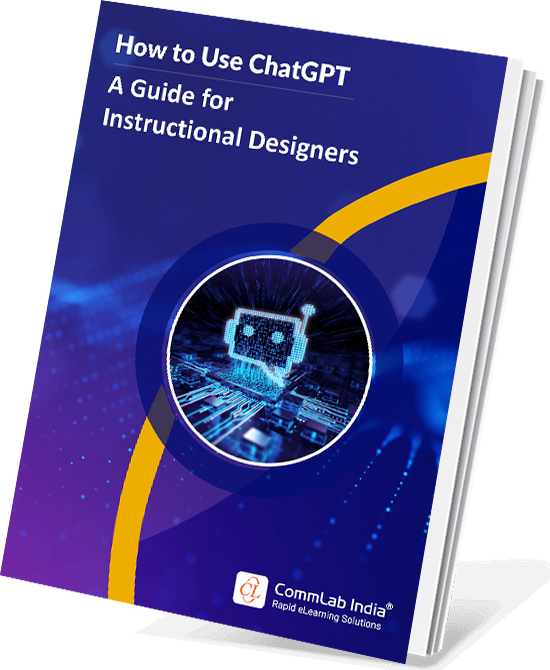Instructional Design Tips to Create Engaging Microlearning Modules

Let's face it, attention spans are shrinking faster than a free ice cream cone on a hot summer day. Traditional training methods, with their lengthy modules and one-size-fits-all approach, are struggling to keep up with today's information overload. But fear not, fellow knowledge warriors! There's a hero emerging from the learning landscape, and its name is microlearning.
→ Download Now: Where Does Microlearning Fit in Your Learning Strategy?
Table of Contents
- Microlearning vs. Training Overload: Why Bite-Sized Wins Big?
- How Microlearning Differs From Traditional Learning?
- What are Some Popular Microlearning Formats?
- What Are the Instructional Design Tips for Effective Microlearning Modules?
Microlearning vs. Training Overload: Why Bite-Sized Wins Big?
Traditional training often resembles a knowledge buffet – overwhelming portions and a struggle to remember anything by dessert. Microlearning flips the script, offering targeted content in bite-sized modules. This laser focus cuts down on learning time while boosting retention. Imagine learning a new software feature in a 5-minute video instead of a 2-hour lecture – that's the power of microlearning!
But it's not just about efficiency. Microlearning thrives in our mobile world. These modules are accessible anytime, anywhere on smartphones or tablets, making them perfect for just-in-time learning. Need a refresher on a specific task? Pull up a quick microlearning module right before tackling it.
Finally, microlearning ditches the monotony of traditional methods. Interactive elements, gamification, and multimedia formats like videos and infographics make learning engaging and interactive. No more glazed-over eyes in the back of the room – microlearning courses keep learners actively involved and motivated to learn.

How Microlearning Differs from Traditional Learning?
Imagine learning a new skill: in one world, you're bombarded with a hefty textbook full of dense information. On the other, you receive bite-sized, digestible lessons delivered in short bursts. This is the fundamental difference between traditional learning and microlearning. Other differences include:
Chunking: Microlearning modules deliver focused, bite-sized chunks of knowledge compared to lengthy traditional sessions. Think power nap vs. all-night cram session.
Contextual Relevance: Microlearning excels at connecting with real-world scenarios, making information instantly relevant and applicable. No more "Why am I learning this?" moments.
Adaptability: Forget rigid course structures! Microlearning is agile, easily updated, and accessible on-demand, catering to diverse learning styles and busy schedules.
Feedback Loop: Microlearning closes the knowledge gap with immediate assessments, while traditional learning often relies on delayed evaluations.

Where Does Microlearning Fit in Your Learning Strategy?
Uncover the Secrets to Crafting High-performing Micro Assets!
- What Microlearning is and What it is NOT?
- Types of Microlearning Assets
- Tips and Tools for Rapid Microlearning Development
- And More!
What are Some Popular Microlearning Formats?
Microlearning isn't just about delivering bite-sized knowledge; it's about variety! Here's a glimpse into the diverse formats that keep microlearning engaging and effective:
- Video Nuggets: Short, captivating video learning clips are perfect for explaining procedures, showcasing software features, or demonstrating real-world applications. Think of them as educational snack commercials that leave you wanting more.
- Interactive Quizzes: These quick assessments aren't just about testing knowledge; they solidify understanding by prompting learners to recall key points and apply learned information. Interactive quizzes are like mini-games that reinforce learning in a fun and engaging way.
- Scenario-Based Simulations: Step into the shoes of a customer service rep or a project manager! Scenario-based simulations allow learners to practice skills in a safe, virtual environment, preparing them for real-world challenges.
- Text-Based Graphics & Animations: Not everyone learns best through video. Microlearning design embraces this by offering text-based modules with engaging graphics and animations. Think infographics that come alive or cheat sheets with a touch of interactivity.
- Mobile-Friendly Learning Modules: Gone are the days of chained-to-a-computer learning. Microlearning thrives on mobile devices, allowing learners to access knowledge-packed modules anytime, anywhere. Think of quick learning bursts during commutes or coffee breaks.
- Gamification Elements: Who doesn't love a little friendly competition? Microlearning can incorporate gamification elements like points, badges, and leaderboards to boost motivation and make learning a fun and rewarding experience.
What Are Some Powerful Formats for Microlearning? [Video]
These are just a few examples – the world of microlearning formats is constantly evolving. The key takeaway? Microlearning offers a delicious smorgasbord of options, ensuring there's a perfect format to cater to every learner's preferences and learning styles.

Where Does Microlearning Fit in Your Learning Strategy?
Uncover the Secrets to Crafting High-performing Micro Assets!
- What Microlearning is and What it is NOT?
- Types of Microlearning Assets
- Tips and Tools for Rapid Microlearning Development
- And More!
What Are the Instructional Design Tips for Effective Microlearning Modules?
Microlearning modules might be bite-sized, but their impact can be mighty. Here are some effective instructional design tips to help you curate impactful microlearning experiences:
- Sharp Objectives: Start with laser focus. Define clear learning objectives for each microlearning module, outlining the specific knowledge or skill learners will gain.
- Content on Point: Keep the content of microlearning courses concise and relevant. Strip away unnecessary information and ensure it directly supports the learning objective.
- Visual Appeal is Key: Humans are visual learners. Utilize engaging graphics, animations, and multimedia to break up the text, enhance understanding, and boost recollection.
- Check for Understanding: Don't just tell, test! Incorporate quick quizzes and knowledge checks to solidify learning and identify knowledge gaps.
- Tailor the Learning: One size doesn't fit all. Consider offering personalized learning paths or microlearning modules that cater to different learner profiles.
- Close the Loop: Learning shouldn't be a one-way street. Incorporate immediate feedback mechanisms to help learners understand their progress and identify areas for improvement.

Parting Thoughts!
The learning landscape is ever-evolving, and innovative microlearning approaches are the key to keeping learners engaged and empowered. By leveraging bite-sized content, interactive formats, and mobile accessibility, microlearning offers a winning formula for knowledge retention and skill development. Ready to unlock the full potential of microlearning and revolutionize your training strategy? For that, you first need to understand where does microlearning fit in your learning strategy. Read the eBook given below to find out.
Editor’s note: This post was originally published on June 06, 2024 and has been updated for comprehensiveness.




![What are the Best Authoring Tools to Develop Microlearning Assets [Infographic]](https://blog.commlabindia.com/hubfs/blogs/best-authoring-tools-develop-microlearning-assets-info.jpg)
